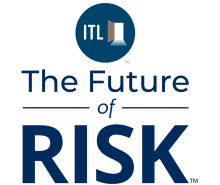We have made it past the year's midpoint, and the auto insurance environment has exceeded expectations. The major auto insurers are flexing their muscles and operating from a position of strength. Loss ratios have improved, reserves are robust, and pricing strategies have mostly achieved rate adequacy. While the number of carriers operating in the market has remained largely unchanged, we're witnessing heightened competition through an increasingly unanimous growth mindset.
When 2025 began, some carriers pursued aggressive growth while others homed in on profitability and loss ratio management. Currently, however, the pivot is toward capturing greater market share. This shift is demonstrated by increased competitive pricing strategies, advertising spending, and renewed focus on growth-oriented distribution channels such as price-comparison marketplaces. A few insurers have even adopted targeted rate decreases in recent months, signaling confidence in their financial health and competitive positioning.
Mergers and Acquisitions
As the year progresses, mergers and acquisitions in the broader P&C market will likely pick up steam as insurers pursue growth in their core underwriting segments and investors seek liquidity for long-held investments.
Sentry Insurance's $1.7 billion acquisition of The General from American Family Insurance is a prime example. Sentry was able to double down on its core, non-standard market focus while American Family Insurance generated a meaningful pool of capital to pursue its strategy outside of non-standard auto. Another compelling example is Munich Re's $2.6 billion acquisition of NEXT Insurance, the largest P&C insurtech acquisition on record.
Transactions like these signal what could be the beginning of a broader consolidation characterized by major insurers leveraging strong balance sheets and high stock valuations to acquire smaller, innovative companies. These deals offer a dual advantage: acquiring cutting-edge technology to fuel growth (or profitability) while eliminating burgeoning competition from less capitalized players.
Increased acquisition activity presents an interesting paradox for auto insurers. Yes, loss ratios in the auto market have improved, encouraging growth initiatives. And yes, Wall Street favors rapid expansion, especially in favorable market conditions. But significant uncertainties are brewing under the surface, and the continuing unpredictability concerning tariffs continues to complicate long-term cost and loss forecasting.
Buoyed by the robust market, the auto insurance industry is poised to continue pursuing aggressive growth and acquisitions. But make no mistake: The industry has to remain cautious about the prospect of an impending recession and the economic risks of inflation, stagflation, and tariffs by remaining mindful of costs, especially acquisition and staffing expenses.
The Rates Balancing Act
Even though car insurance is legally required, economic downturns can cause consumers to choose lower coverage limits or abandon coverage entirely. Shrinking premium pools and rising numbers of uninsured motorists can increase loss exposure for carriers. In addition, recessions typically reduce investment returns, further straining insurer profitability. During inflationary climates, claims costs jump, as well, creating a challenging situation where fewer premiums, higher losses, and diminished investment income coalesce.
Major tariff worries may be temporarily postponed, but they are expected to worsen next year, when their full economic impact may become evident. Rising costs could compel auto insurers to modify premiums, upping the possibility of customers choosing lower levels of coverage. This scenario would place carriers in a difficult position: balancing competitive pricing to maintain market share while managing escalating claims costs. Insurers are taking preemptive measures by booking strong combined ratios and building financial reserves while market conditions remain favorable. The objective is to remain competitive with pricing and capture profitable market share without overextending financial resources.
Regulations
On the regulatory front, significant federal intervention doesn't appear likely for the foreseeable future. The auto insurance market remains predominantly state-regulated, and while insurance pricing concerns remain, no major initiatives have emerged at the national level.
That being said, affordability challenges and consolidation could trigger state-level discussions. Illinois is a prime example. Rapid home insurance price escalation in the state has triggered a response from the governor, who is calling for the state legislature to step in. In Louisiana, a law was enacted that empowers its top insurance regulator to unilaterally reject rate requests that are deemed excessive. As affordability concerns mount - especially in light of potentially worsening economic conditions - don't be surprised if there is more state-level intervention seeking to insulate constituents from increasing premiums.
Auto vs. Home
While major auto carriers have the green light, some auto insurtech companies may face a flashing yellow one. Many smaller, rapidly growing insurtechs struggled during the inflation surge that followed the pandemic. Without the financial resilience that big insurers enjoy, these companies have struggled to maintain growth, manage loss ratios, and compete for consumer attention and market share. Consequently, the industry may see a wave of insurtech consolidation (or bankruptcies) over the next 18 months as these upstarts lack the standalone funding to out-compete their larger counterparts.
The homeowners insurance market has also found itself at a yellow light. Loss ratios for many carriers remain strained due to the steady barrage of catastrophic weather events. Floods, severe storms, wildfires, and other worsening environmental hazards have pushed premiums higher, leaving few regions untouched by rate increases.
It's little surprise, then, that acquisition activity in this sector has slowed considerably, with many carriers prioritizing risk management over growth. Insurers are focusing on stabilizing their portfolios and restoring profitability rather than pursuing new business aggressively. It's become harder to find profitable underwriting opportunities, and amplified regulatory scrutiny at the state level is anticipated as affordability concerns mount.
There are some signs of hope for the market, though. Some major players have been able to escape the worst of the weather events and are starting to turn an eye toward expansion. This market is far from the growth mindset of auto, but there could be green shoots of interest in the back half of the year for the best-positioned carriers.
Overall, as we move into the second half of 2025, I am much more optimistic about the market conditions, particularly in auto insurance, than I was at the beginning of the year. Improved loss ratios among the big carriers signal stability, and consumers are hopeful that the largest rate hikes are behind us. Right now, the industry is in a cycle of aggressive growth, and we can expect M&A activity to pick up as the major players look to expand their footprint.
On the flip side, the homeowners market remains under pressure, grappling with persistent losses and limited underwriting appetite. Still, with several months remaining, there's time for carriers to stabilize and reposition for a stronger finish to the year.






